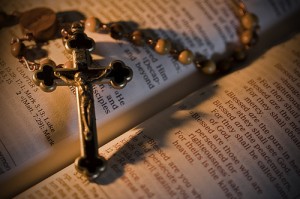 All four lectionary readings are a proclamation of some facet of the Kingdom of God. Think of the Kingdom of God as a diamond upon which light is shining. The light causes a bright array of refractions to flash out from the gem. If the Scripture, the written revelation of the Kingdom of God, is that diamond, then the lectionary readings on any given day are simply a closer look at one refraction—one manageable portion of a brightness almost too dazzling to comprehend all at once.
All four lectionary readings are a proclamation of some facet of the Kingdom of God. Think of the Kingdom of God as a diamond upon which light is shining. The light causes a bright array of refractions to flash out from the gem. If the Scripture, the written revelation of the Kingdom of God, is that diamond, then the lectionary readings on any given day are simply a closer look at one refraction—one manageable portion of a brightness almost too dazzling to comprehend all at once.
The Gospel reading will identify the primary theme in the Liturgy of the Word in each Mass. The Old Testament reading will show us how what we see of Jesus and His Kingdom in the Gospel reading was foreshadowed in the covenant God made with Israel. It will help us see that Jesus fulfilled the plan God had from the beginning to create a people for Himself. The psalm, also from the Old Testament, is a prayerful response to or meditation on the theme that begins to develop from both the Gospel and the Old Testament reading. The epistle reading is usually either a practical application of the Gospel theme or a more theological explanation of it.
Generally, we will find one theme common to all the readings, although sometimes this will require work. That won’t hurt us! The more we read and think about the various Scriptures, the better we will understand them. The better we understand them, the more wholehearted our response can be. Remember, the Scriptures are Jesus, the Word of God, speaking to us. He told us, “Everyone who hears these words of Mine and does not do them will be like a foolish man who built his house on sand” (Mt. 7:26). Will we choose to be wise or foolish at Mass?
